Types and varieties of pelargonium
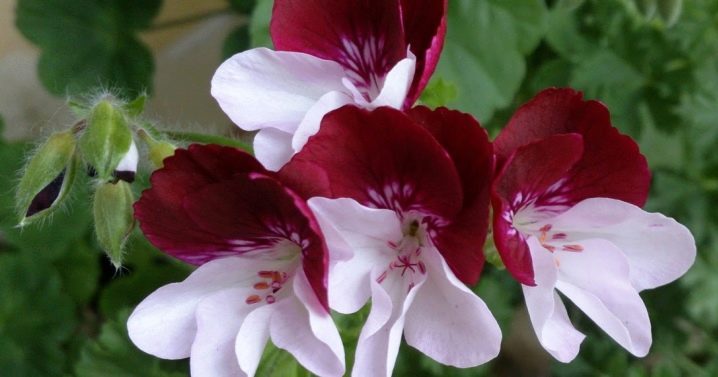
Pelargonium is known as geranium, in our country this name is more familiar to plant breeders. There are many varieties, each differing in the shade of the inflorescences, the size of the bush and other characteristics.
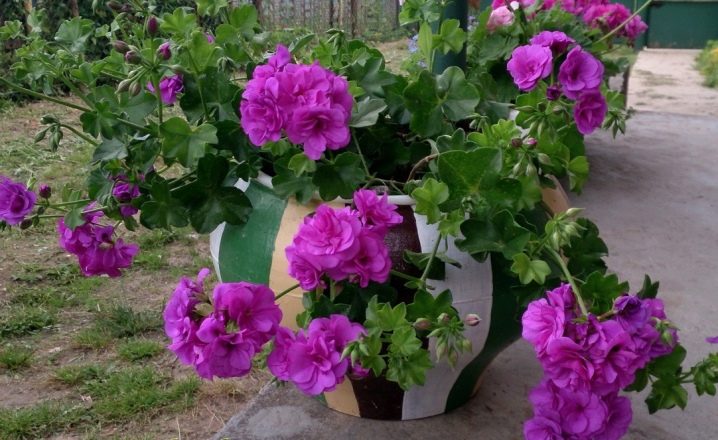
Description
Pelargonium is an abundantly flowering plant, the genus of which includes about 200 varieties. Geranium is the most commonly used botanical name for a particular plant genus that is closely related. Both pelargonium and geranium belong to the same family: Geranium. Pelargonium is an evergreen perennial whose main habitat is a temperate and tropical climate.
Most often found in southern Africa. In our country, the flower is grown as a decoration for window sills and balconies. It is a drought tolerant plant. It can only tolerate minor frosts.
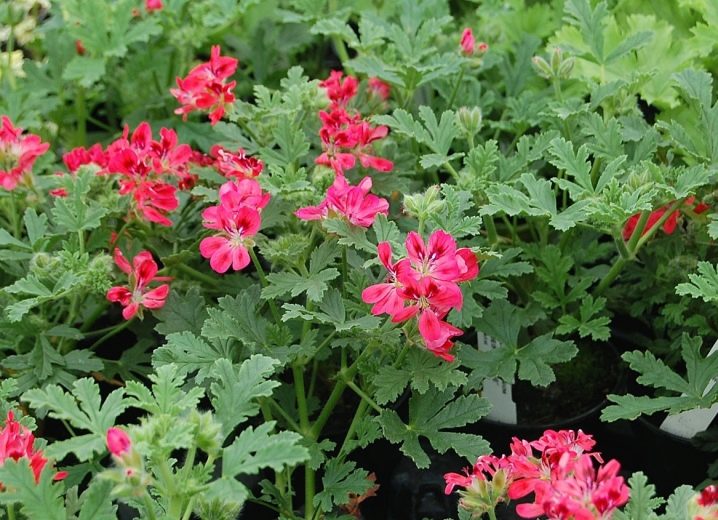
Several species are extremely popular garden forms grown as houseplants. Most varieties have a long flowering period. Among the shades of inflorescences:
- purple;
- Red;
- Orange;
- White.

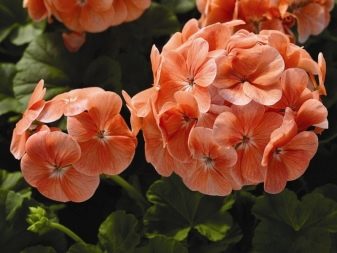
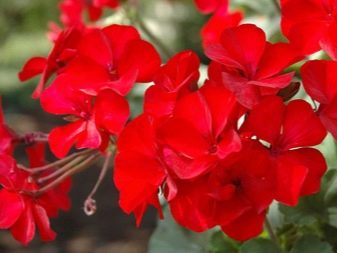
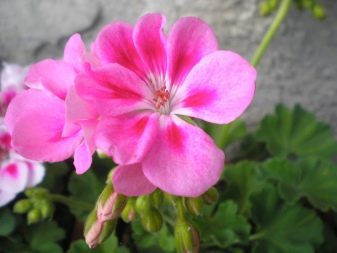
Pelargonium occurs in the form of herbaceous annuals, dwarf shrubs, succulents and geophytes. Erect stems hold 5 flowers in umbellate clusters, which sometimes branch out. Not all flowers appear at the same time, they open from the center outward.
The flower has a single plane in symmetry (zygomorphic), which distinguishes it from geranium, which has radial symmetry (actinomorphic). In this case, the lower 3 front petals differ from the 2 upper rear petals. The back has an unusual shape, due to it, a nectar tube is formed, the size of which varies from a few millimeters to several centimeters. It is an important characteristic in the morphological classification of colors.
The leaves on the stem are usually alternating; they can be palmate-lobed or pinnate. Foliage is located on long shoots. Sometimes it has a pattern that can be lighter or darker than the main shade.
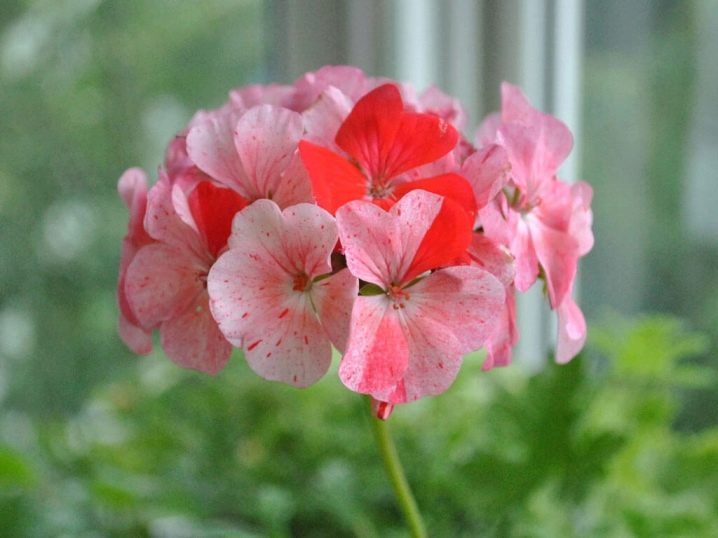
Varieties
The painstaking work of breeders made it possible to breed an uncountable number of varieties, and on their basis, and hybrids of pelargonium. You can distinguish some varietal species from others by the shape that flowers and foliage have, as well as by color. Potted geranium is represented by the following classification:
- peony;
- grandiflora;
- ivy;
- unique;
- zonal;
- fragrant;
- royal;
- angel;
- succulent.
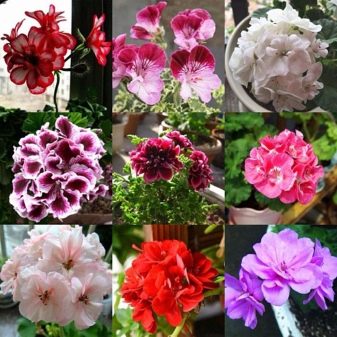
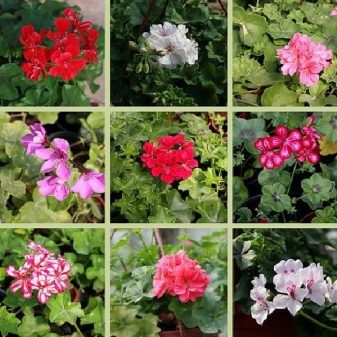
The peony was bred artificially and was the result of numerous experiments of breeders. The unsurpassed decorative qualities have led to the great popularity of the flower. In comparison with this species, the grandiflora shows a compact bush and lush flowers. In an adult plant, the lower shoots become lignified over time.
More often than others, zonal geraniums are found on window sills; it offers plant breeders many attractive varieties.... Of the main distinguishing characteristics, one can single out abundant flowering and excellent resistance to changes in conditions of detention and diseases. You can distinguish the variety by its erect trunk, a large number of leaves that have a refrain shape, as well as a border around the edge of a different color: red or brown. It is difficult not to notice the light fluff on the surface of the leaves. Plus, they exude an incredible scent. Within this species, there is its own classification by the type of flowers:
- terry;
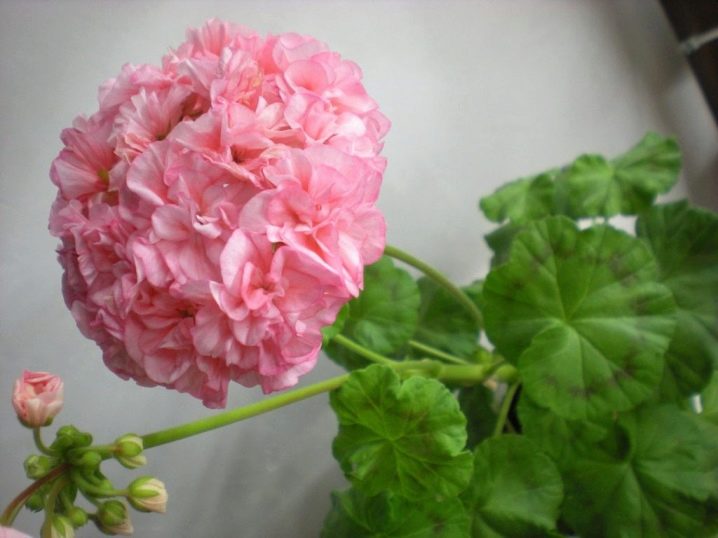
- semi-double;
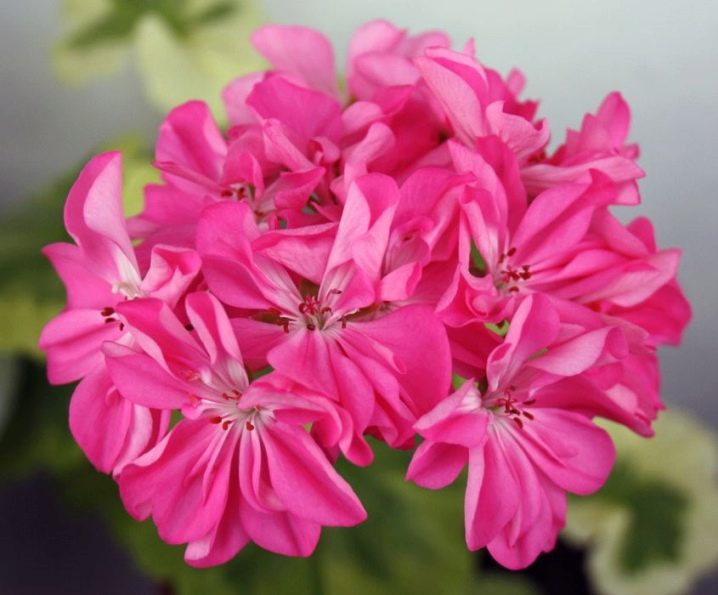
- ordinary.
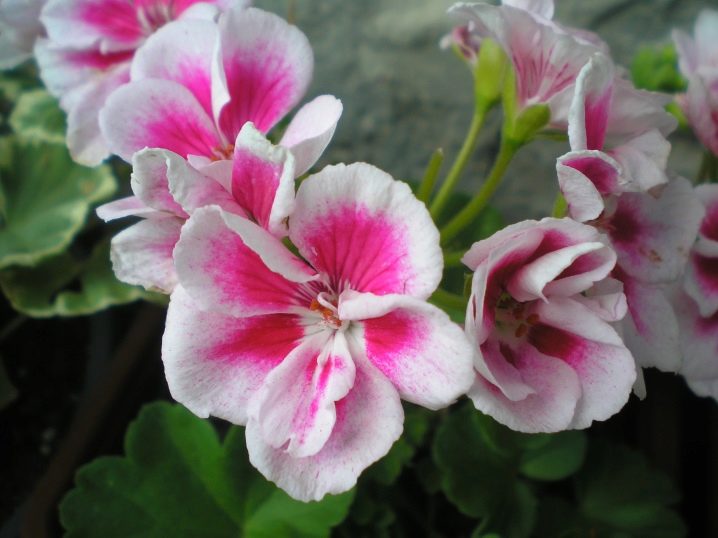
In ordinary ones, only 5 petals are formed in a flower, semi-double ones have up to 8, and double ones have more than 8 petals.
Flowers differ in shape:
- dikons;
- cactus;
- tulip;
- rosebuds;
- star-shaped;
- formose.
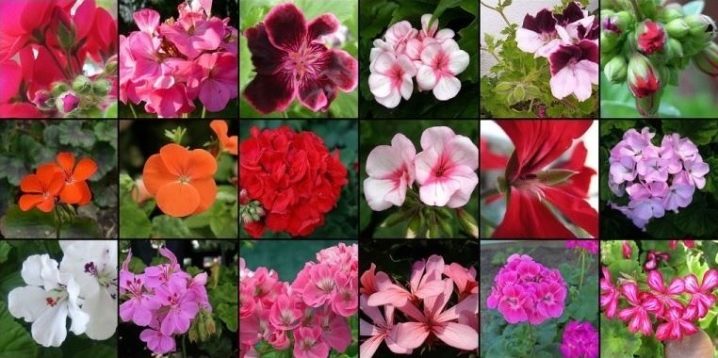
To distinguish one from the other is quite simple, you just need to know the characteristic features of each species. For example, it is easy to guess that the flowers of tulip geraniums are similar to the closed buds of the flower of the same name. Rosebuds have more resemblance to an incompletely opened rosebud.
Cactus geraniums have long, narrow petals that are rolled into a tube, from the side they have an amazing resemblance to aster ones. In formosa, the flower is formed in the form of a five-pointed star, like in star geraniums, only a dissection is observed on the foliage: the leaf consists of 5 parts.

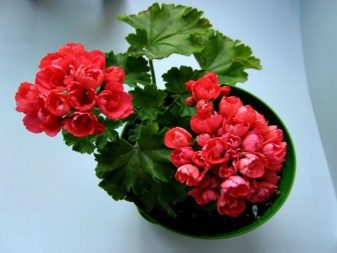
Deacons are small hats that resemble bouquets. Most often they are red, pink and sometimes purple, they have a very rich shade. According to the color of the petals, the varieties of this geranium also have differences. It happens:
- monotonous;
- two-color;
- multicolor;
- with a border.

There are also flowers, which in the world of horticulture are called "bird eggs", because the petals are interspersed in the shape of an egg. Such geraniums bloom actively throughout the summer period, you can not send the plant to rest, and then it will form buds throughout the year.
Zonal pelargonium got its name from the color of the foliage, which resembles division into separate zones: the edging and center of each leaf are painted in different shades. A border of wine, blue, red or white can be along the edge. Rarely, but there are hybrids in which the foliage is painted in 3 colors. The middle can be gold, silver or black. In height, zonal pelargoniums can be:
- microminiature, when the height of the bush is not more than 140 mm;
- dwarf with a plant height of 140 to 250 mm;
- normal shoots with a length of 250–700 mm;
- Airins are the highest varieties of geraniums from 700 mm.
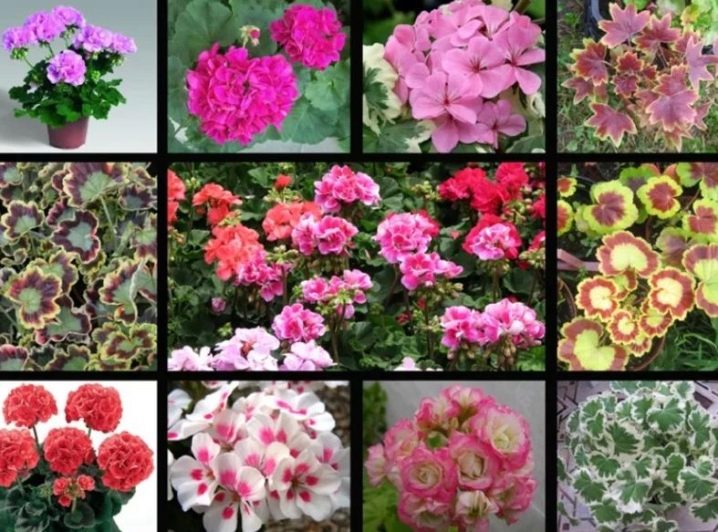
Plant breeders around the world consider one of the most beautiful existing species pelargonium royal. It is characterized by a large size of flowers, which, depending on the variety, can be of a dark wine shade, attractive red, delicate white or pink, rich purple.
In width, each inflorescence reaches 160 mm, the height of the bush is also 160 mm. At the beginning of the 19th century, breeders began to create new hybrids of the royal geranium in large batches. It was during this period that the houseplant became one of the most beloved.
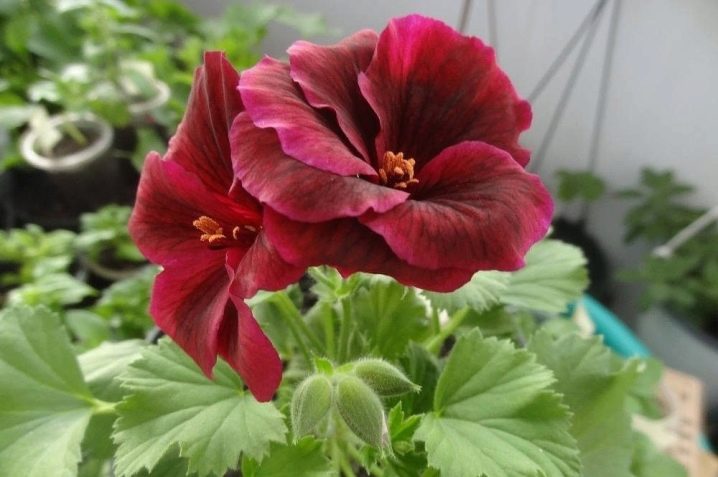
Today, you can find simple or double flowers on sale. Another characteristic feature of the species is that its petals come in a wave or have a corrugated surface with a dark stripe or spot. The flowers have large petals.
On closer inspection of the plant, you can see that the foliage with teeth, not smooth, but, on the contrary, rough to the touch, is very similar in shape to maple leaves. The color of the varieties may differ: sometimes it is monochromatic, sometimes two-colored, very bright. Of all types of pelargonium, this one is the most capricious, it requires a lot of attention, while it does not bloom as abundantly as others. The first flowers can be seen only 2 years after the young royal geranium is planted.
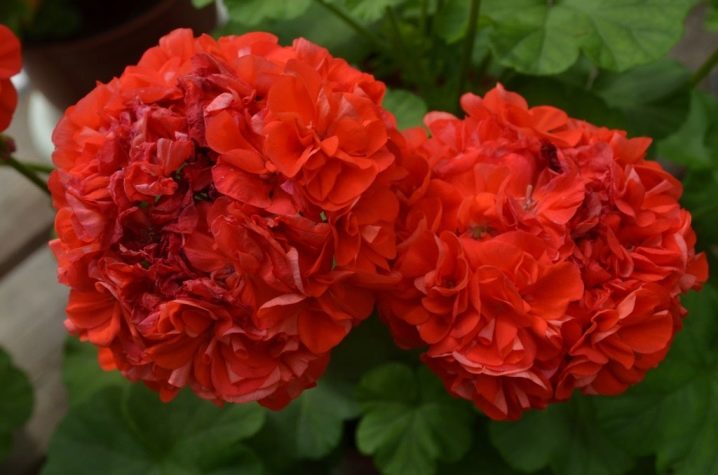
All types of pelargonium have a specific aroma, but fragrant is characterized by a very pleasant smell that comes from the leaves. Hence the name of the species. To feel the aroma, you just need to lightly rub the leaf. Breeders have managed to develop hybrid varieties that smell of other plants and fruits, such as apples, lilacs and even pine.
The flowers on the bush are medium-sized, most often they are pink or purple. The shape may vary. The foliage is a rich shade, cut into 7 parts. It is from this plant that oil is extracted, which is characterized by many useful properties.The scope of application of the product is not only medicine, but also perfumery and even cooking.
Few people know, but just a few drops of geranium oil can drown out the aroma of milk. Foliage is often found as a side ingredient in tea, cakes, or fruit dishes.
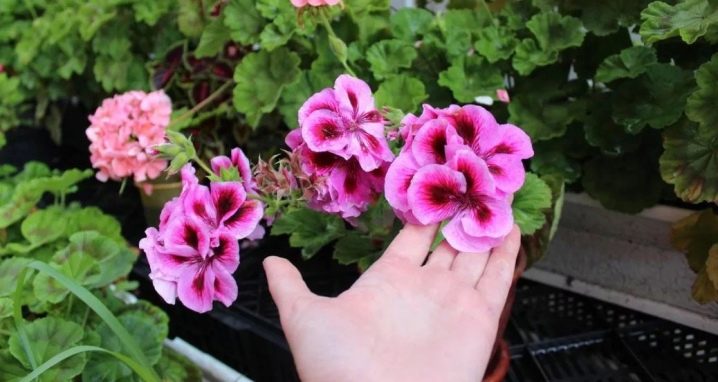
Ivy-leaved geranium is ranked by plant breeders as an ampelous species. Shoots on the bush are formed very fragile flowing down. Their length rarely reaches more than 1m. The leaves are glossy, have a rich shade and are formed in the shape of a star. They resemble ivy leaves, which is why the plant got this name.
The flowers that originate in the buds are simple, sometimes double or semi-double: it all depends on the individual characteristics of the bred variety. Maximum width 50 mm. The shade of the petals is either dark blue, almost black, or crystal white. The species begins to bloom when spring ends and winter begins.
Ivy geraniums are often used as decoration for open balconies, as they look especially impressive in hanging baskets.

Violet inflorescences are formed in the Angel Pelargonium species. The flowers are very reminiscent of another plant, no less well-known to plant breeders: pansies. If you make regular pruning, then the maximum height of the bush of this geranium is up to 350 mm. Florists love pelargonium for its branchiness, attractive shape and unpretentiousness.
Indoor geranium blooms all warm months of the year. Among the variety of options presented by breeders, one can distinguish pink, purple, lilac and white geraniums. There are bicolor and variegated varieties with stripes or spots of other shades on 2 petals on top.
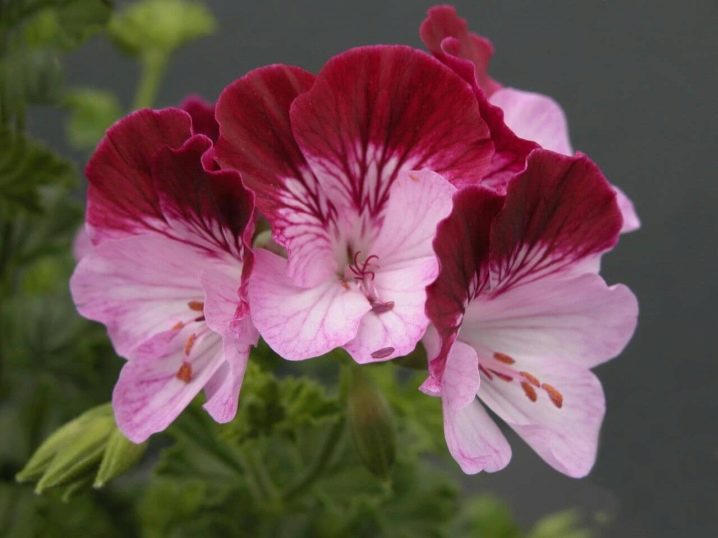
Another species, which is already about a century old - pelargonium is unique. Breeders managed to get it by artificially crossing the royal and brilliant species. Geranium is distinguished by a dark green color of leaves, which have a pleasant aroma and have a strongly dissected shape. The flowers are similar in characteristics to those of the royal geranium species, only the dimensions are smaller. The middle is white, the foliage is red.
Pink and white varieties are not easy to find, some have streaks and spots on the petals of a dark shade.
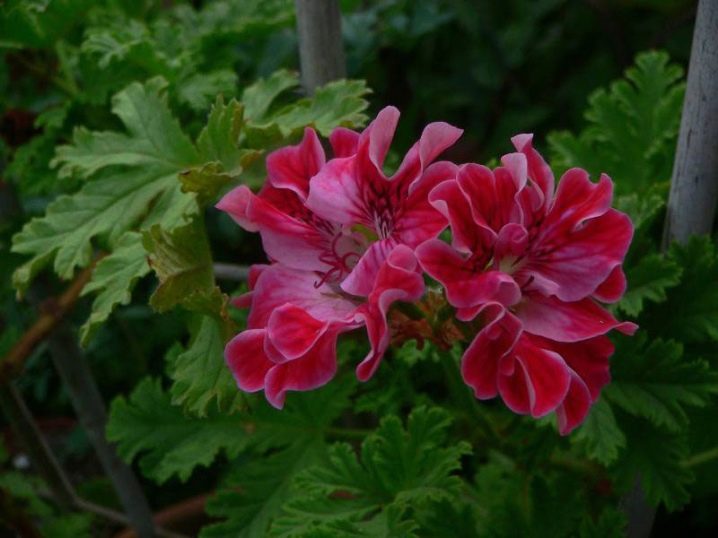
Of the most unusual types of geraniums, succulent varieties. Bottom, the bush has lignified shoots, which are not only strongly branched, but also curved. These plants have special requirements for moisture and watering. If it is dry, the foliage begins to fall off immediately. Each bush is formed into a bizarre shape, sometimes resembling amazing creatures. Thorns are often found on the branches.
Geraniums of this species can be used to create bonsai. There are 10 plant varieties in total, among them the most common are:
- fleshy;
- corusoliferous;
- humpbacked;
- fluffy;
- thick-stemmed;
- angular.
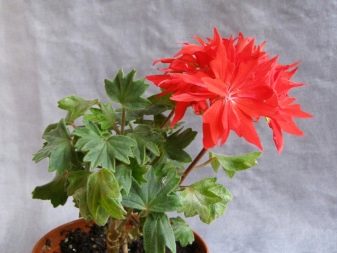
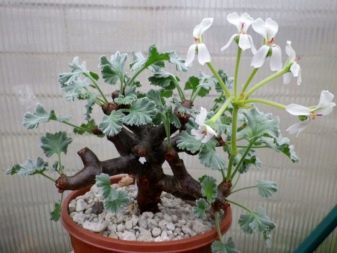
The type of pelargonium worth mentioning is lemon. It has become popular with breeders for its bright green foliage and highly dissected shape. There is a little fluff on the surface.
Under good conditions, the bushes can reach a height of 1.5 meters. If you touch and rub the shoots a little, a pronounced lemon aroma will appear.
Color variety
There are many varieties of pelargoniums with buds that differ in color.
- Bulls Eye Cherry. Zonal pelargonium, in which the leaves are not the usual green hue, but chocolate. Against this background, large inflorescences look especially beautiful with their cherry color. The bush can reach a height of 350 mm. Pelargonium is grown with equal success both in pots and in the open field, it loves a lot of sun.
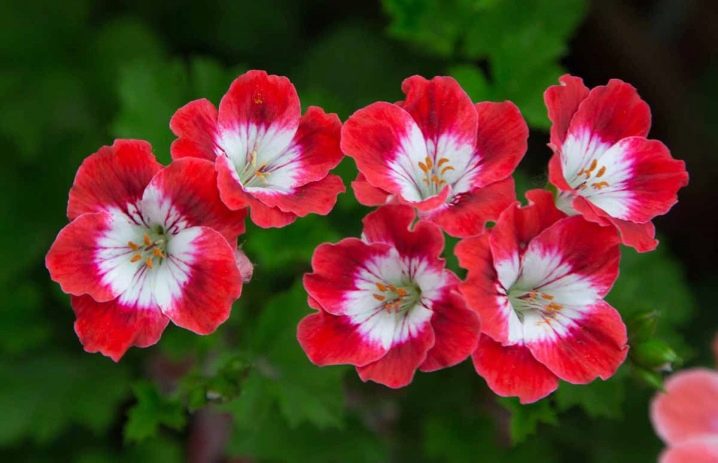
- April snow, or "April snow" - a variety that first appeared in a nursery in Sweden. In Europe, this pelargonium is very popular. The plant fully justifies the name; under the rays of the sun, the shades are more saturated.The shade is pale pink, slightly porcelain if the flower is grown indoors.
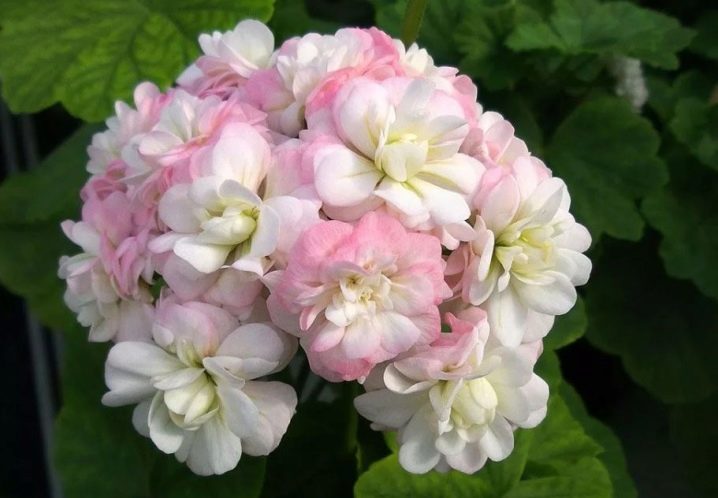
- "Black Velvet". Another variety with chocolate-colored leaves. The bush is 300 mm high, the flowers are salmon-colored, sometimes they can be pink or even red.
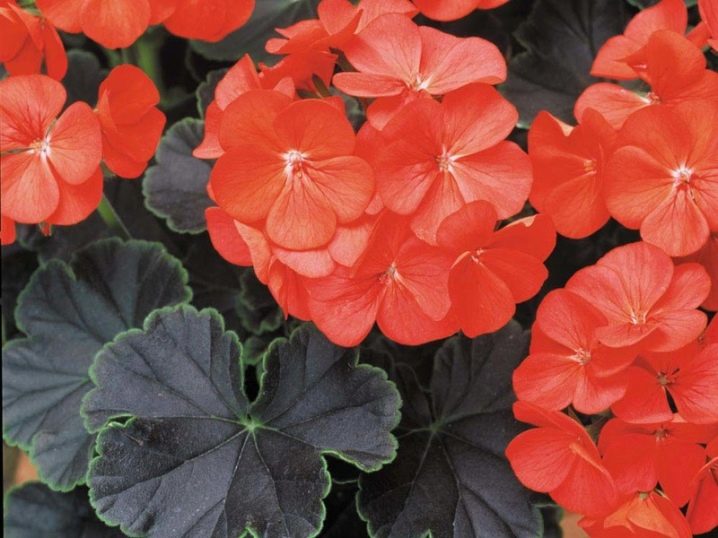
- "Red Pandora"... This tulip geranium is popular in home growing. Small buds give the impression that each inflorescence is a small bouquet. The shade of the petals is coral.

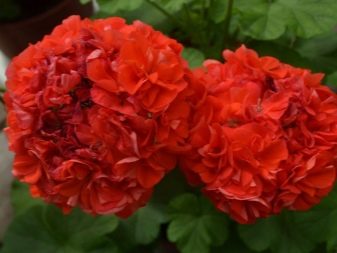
- "Prince Gustav"... A feature of the variety is the buds, which are lush and rather large on the bush. Sometimes novice growers confuse the cultivar with the tulip one, since the flowers are similar to peonies or even cabbage heads. In fact, it is a rosy variety with delicate petals located inside each other. The edges of the petals are slightly wavy, the foliage is dark, beautiful, on its shape the inflorescences look very advantageous.
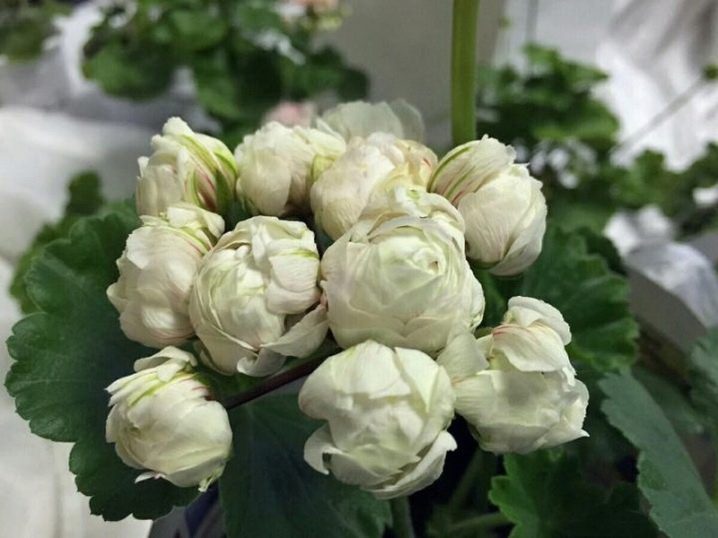
- Dovepoint. Pelargonium with a two-tone pink tint. The stems on the bush are formed erect, double flowers are of medium size.
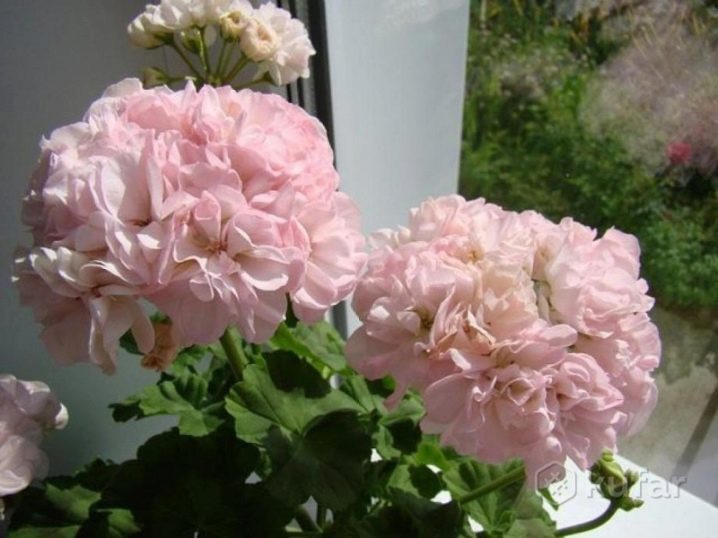
- IV-Lyubava. This is one of the new hybrids that was bred by domestic breeders. The buds are densely doubled with an attractive white tint. The flowers form into large pom-poms, the plant itself turns out to be compact.
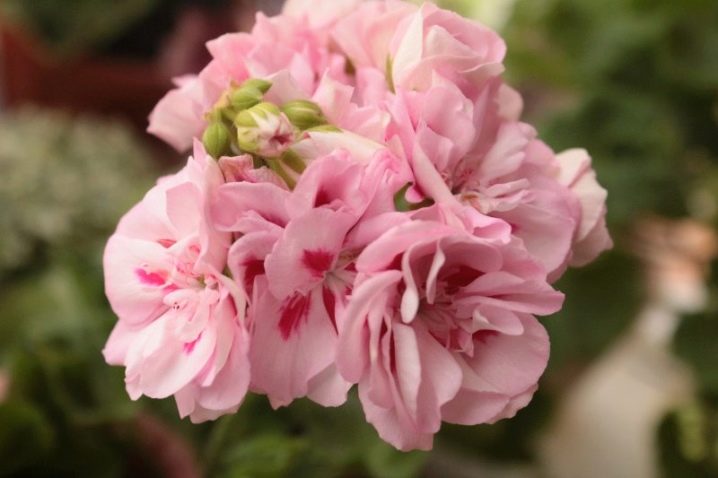
- Saga. The presented variety can be distinguished by 2 signs: the presence of white border petals on a pink background and semi-double flowers. The plant takes the correct shape without additional pruning; during the flowering period it will certainly delight you with numerous buds.
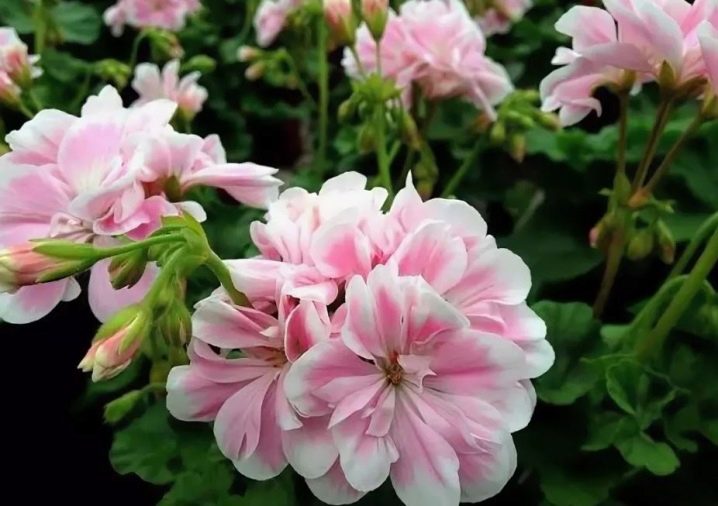
- Dagmar Murray. The amazing salmon-orange shade of the buds distinguishes this plant from others. The petals are wavy, due to which the flowers are double.
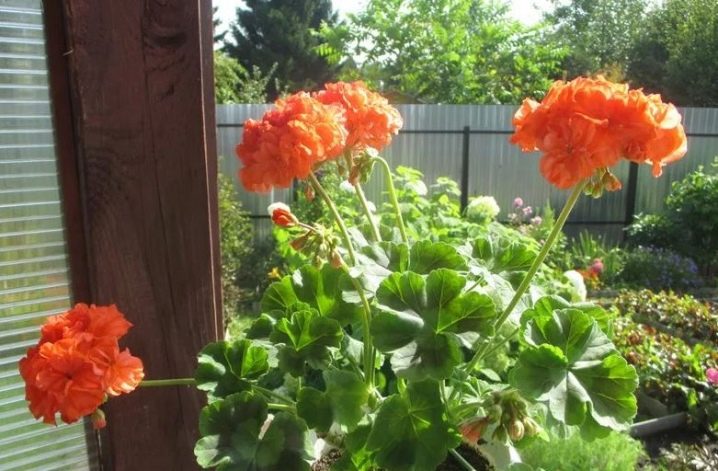
- Brookside flamenco. A variety that is definitely worth paying attention to, since its flowers are directed in different directions, which looks unusual. Red inflorescences resemble carnations, so the presented pelargonium is easily recognizable among others.

- Achievement. A rose-colored hybrid with silk petals that have a particularly attractive sheen.

- Mallorca. This variety belongs to the katusovidnye, has an amazing shape of inflorescences. The main shade of the petals is creamy white, diluted with coral stripes.
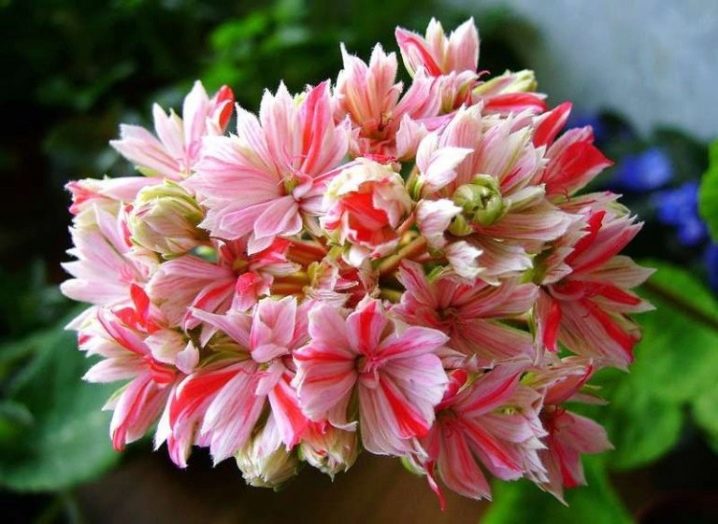
- Richard Hodgson. Geranium, belonging to the star-shaped species. Bushes are small, well branched. The flowers are variegated, there are small red blotches on a pale pink background. The foliage is shaped like frog legs.

- Minah`s cascade. The presented variety begins its flowering in early spring. The plant is short and compact. Flowers are formed double, neat, have a salmon tint. It blooms profusely, but this geranium grows very slowly.
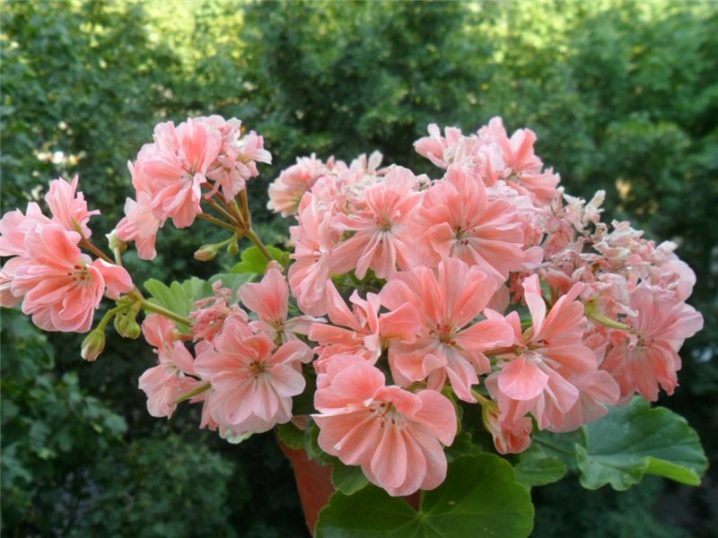
- Jip's freda burges. This pelargonium belongs to the zonal variegated variety. The flowers are very attractive bright pink shade, the core is white.

- Distinction. The variety has a high growth rate, but rarely reaches a height of more than 200 mm. Flowers are small red, inflorescences from them are formed only medium-sized. In comparison with them, the leaves are large, dark with a border of a purple hue.
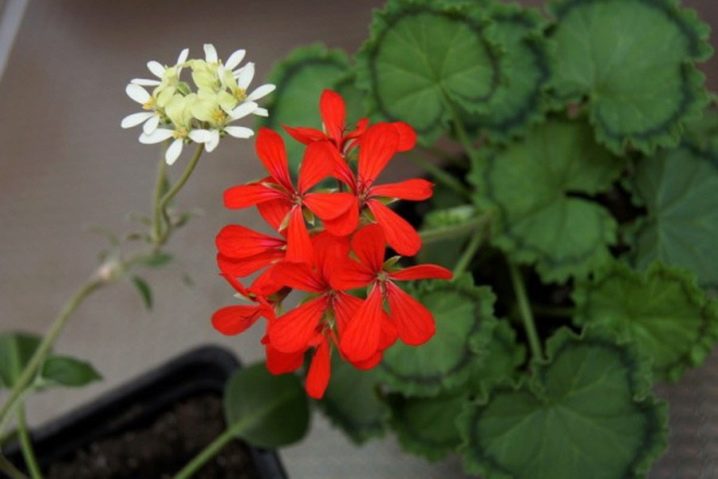
- Colorama. Growers love this pelargonium because large inflorescences grow on small bushes. The foliage has a round shape with a large spot in the center of the leaf. Flowers may vary in color.
The plant feels great not only in indoor conditions, but also in the open field.
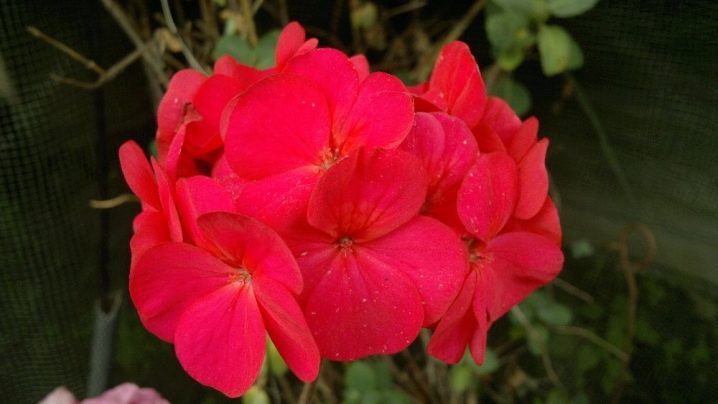
- Unicorn monday morning. Pelargonium is a zonal species. Her buds are white, very double, there are small dots on the surface of the petals, and there is a pink border along the edge. If the flower stands in the sun, then its color becomes brighter.
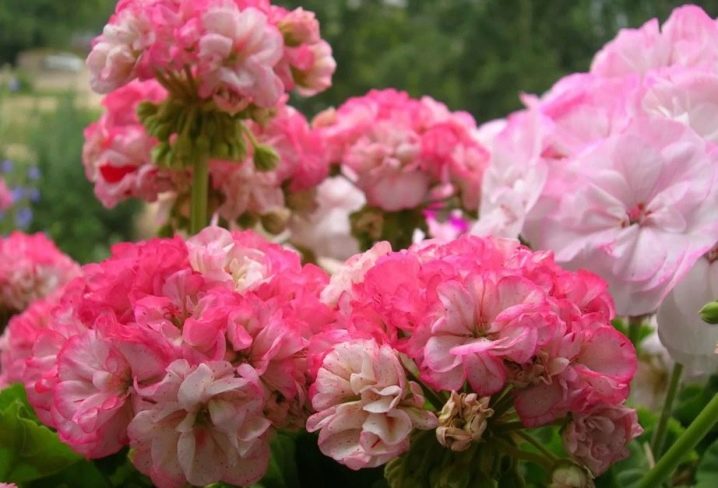
- Granny barter. Many gardeners compare this flower during the flowering period with the bows of a schoolgirl. Coloring is white with pink, inflorescences are densely double. The variety is undemanding, dense, has an attractive shape.
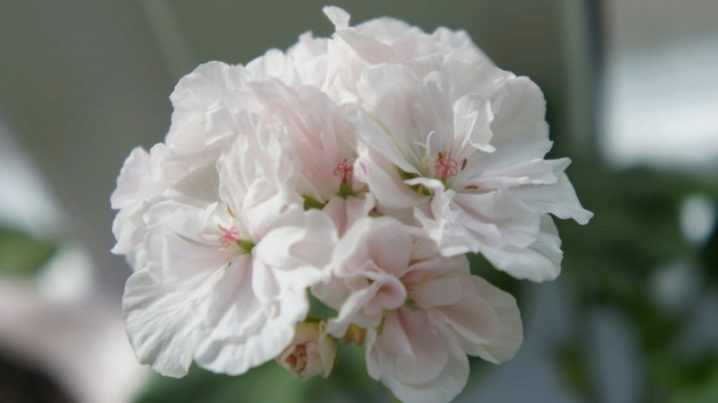
- Orange. A species that stands out for its extraordinary beauty.At a height of 350 mm, a cap of peach-colored inflorescences flaunts. If you provide the plant with high-quality care, then in just 1 season, up to 250 flowers on the bush can change. Plant breeders cannot help but love the described variety for its unpretentiousness.
Best of all, this flower grows in the shade; in the summer it is advisable to take the pots outside.
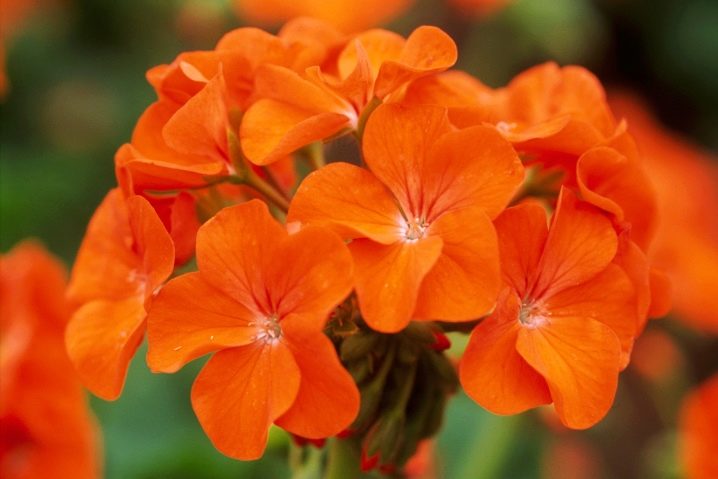
- Ice Rose. It is an ivy-shaped geranium with medium-sized leaves. Despite the spreading of the branches, the bush turns out to be compact. You should not expect rapid growth from this pelargonium, but the buds are very beautiful. After opening, the flowers are 60 mm in diameter, the inflorescence is laid like a rose. With a large amount of light, the shade takes on a lilac tint.
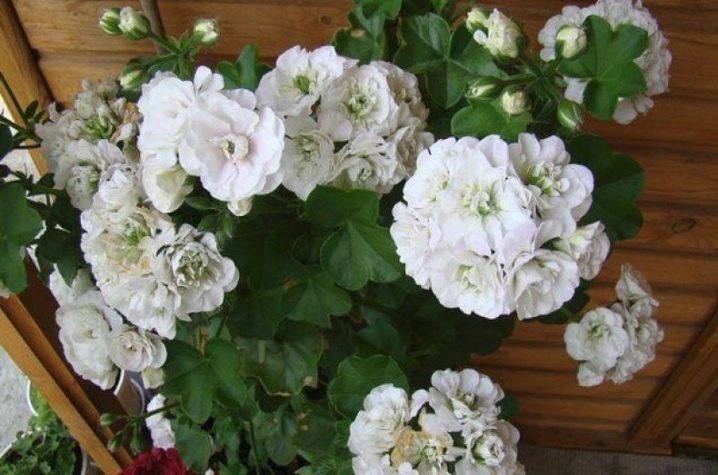
- "Irida confetti"... A zoned flower, perfect for those gardeners who prefer two-tone geraniums. White and pink shades are harmoniously combined on the petals. The bush looks very good in containers, with a sufficient amount of sunlight, the color of the petals becomes brighter. This flower requires a lot of attention, especially during the winter.
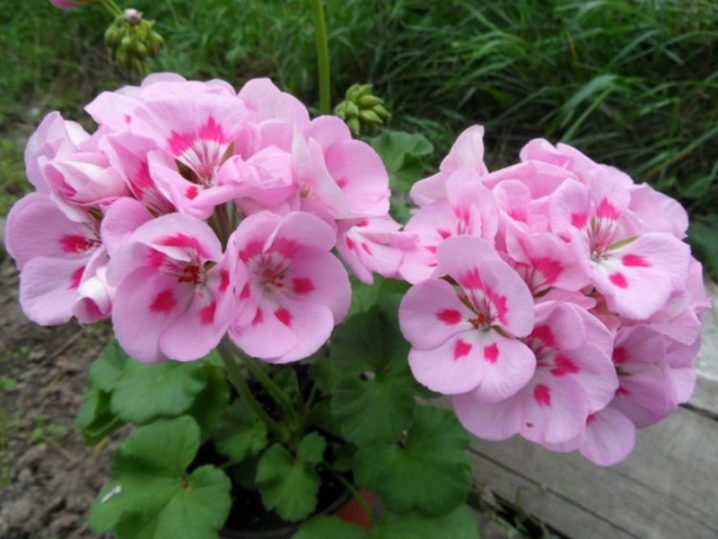
- "Mini Diana". A small pelargonium of miniature dimensions, in which rather large inflorescences develop during the flowering period. The shade of the petals is white with pink, but in the sun it is difficult not to notice a slight golden tint. The foliage is light with a separated dark zone, there is a small pile on the surface. It blooms quickly, completely unpretentious at home. It looks neat in a pot.

- Diana Palmer... It differs from the previous variety by the presence of jags on the edges of the petals. Very similar in shape to a carnation. The color is interesting: with strokes of a different shade, therefore this variety is considered to be two-tone. Among the shades present on the petals are pastel and orange. In a potted form, dense neat bushes are formed that bloom in summer.
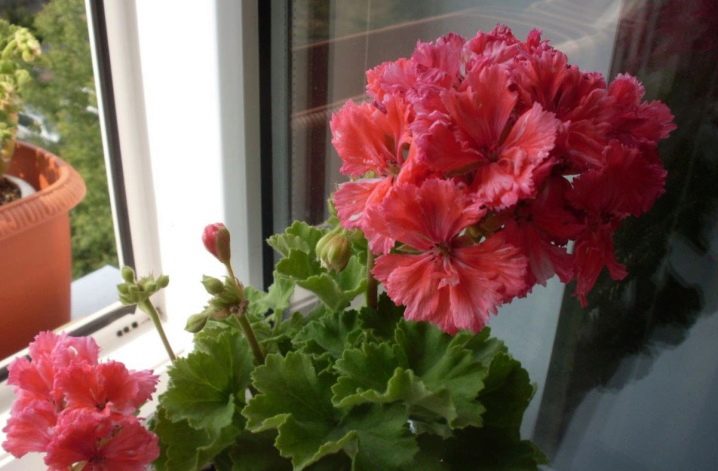
- "Natalie". Pelargonium is small in size with semi-double flowers. When it blooms for the first time, the flowers are medium-sized, only 40 mm, then they can reach 60 mm in diameter. Geranium is capricious, does not stretch much in length in the absence of a sufficient amount of light, but reacts sharply to a decrease in room temperature, even if it is insignificant. The shade of the petals is delicate peach, the edging is white, but not pronounced. Another distinctive feature is the bare trunk.

- "Powder poof"... One of the chic representatives with salmon-colored flowers. It stands out among other geraniums by the light color of the seamy side of the leaves. The mature plant forms a rather fluffy bush with dark foliage. When warm, the flower cap takes on a richer white color. This variety grows quickly, is distinguished by a high rate of emergence of new shoots. Geranium is classified as a dwarf species that requires timely treatment from insects.
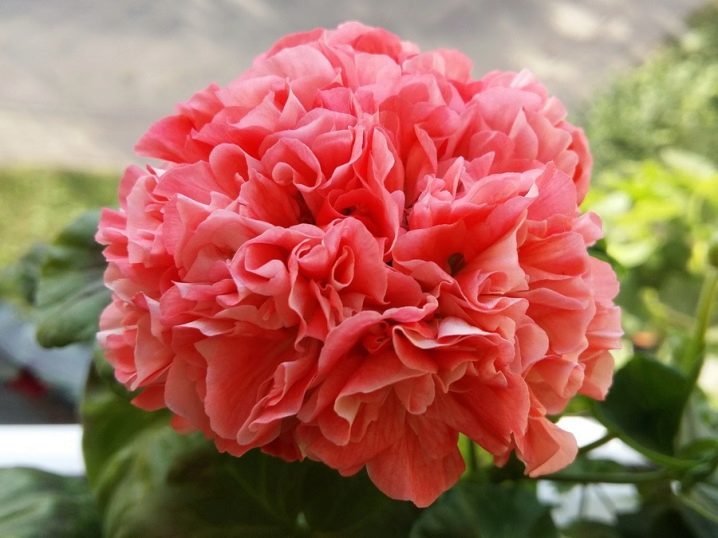
- Bornholm... At the moment of active flowering, it is very similar to a rose that has just blossomed. The shade of the petals is unusually rich red, so the inflorescences are immediately striking. Each flower individually reaches a width of 1 cm. If the room is too hot or the flower is taken outside in summer, the color intensity is likely to decrease. Peduncles grow medium in height, inflorescences are formed on them dense.
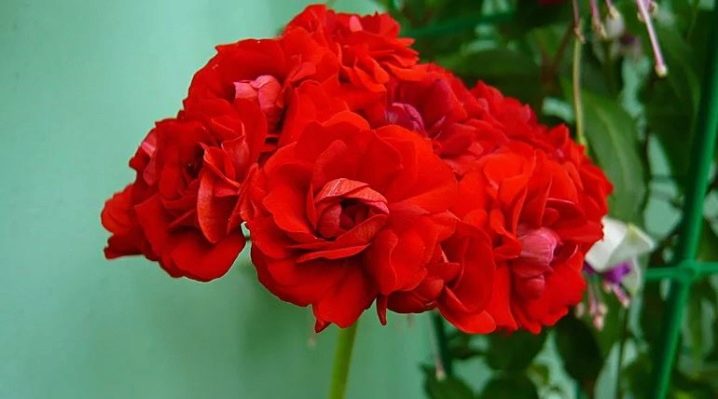
- Albina. If you want to have geraniums on your own windowsill that grows quickly, this is exactly the variety you need. After the first stalk was born, the first peduncle emerges after 3 days. True, for the first time the geranium does not bloom too actively, only 4 buds are formed in the cap. This dwarf plant belongs to the zonal species, the foliage has an intense green tint. Terry buds with red stamens, but themselves are white. This geranium will need to provide additional nutrition in large quantities.
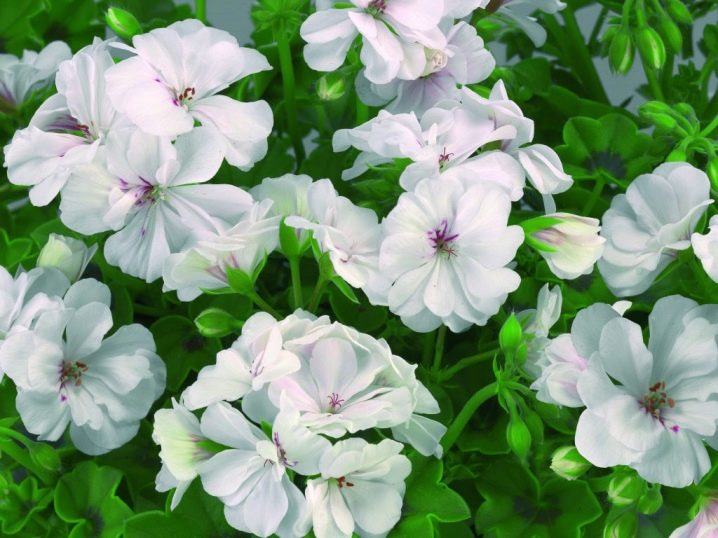
- Elmset. Dwarf pelargonium, loved by plant breeders for golden green leaves and double cream flowers, on which veins of a red hue. In addition, crimson spots flaunt on the surface of the petals. It is difficult not to appreciate the plant for the abundant flowering and neatness of the bush.
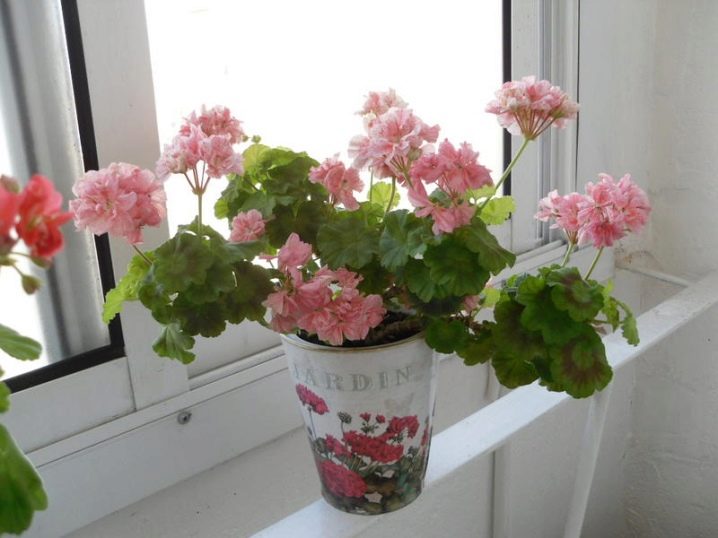
- Dovepoint. You can distinguish the look by the decorative border. The white and pink colors contrast perfectly with each other, this color sets the geranium apart from others. Terry inflorescences are formed dense and voluminous. With a lot of light, a pink tint begins to prevail. The flowers form on short stalks.
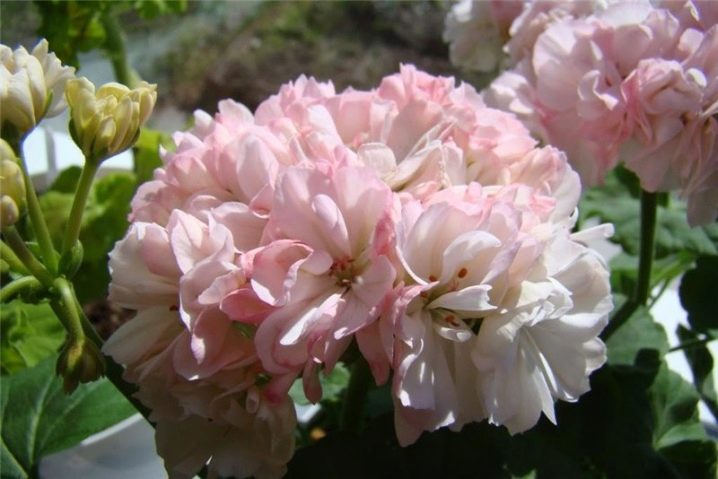
- "Crown Princess Mary". Geranium inflorescences strongly resemble a rose, these are one of the largest flowers, which can be up to 100 mm in width. The color is dim, the main color is white, only the core is slightly green. The shrub blooms in spring, many buds are formed. To support geraniums, the grower will need to transplant annually.
This variety prefers to grow warm under the sun. From time to time you need to feed with complex mixtures.

- "Princess Sandra". A double zoned flower, a red tint prevails on the petals, a white stripe runs in the center. With good care, the bush grows large.
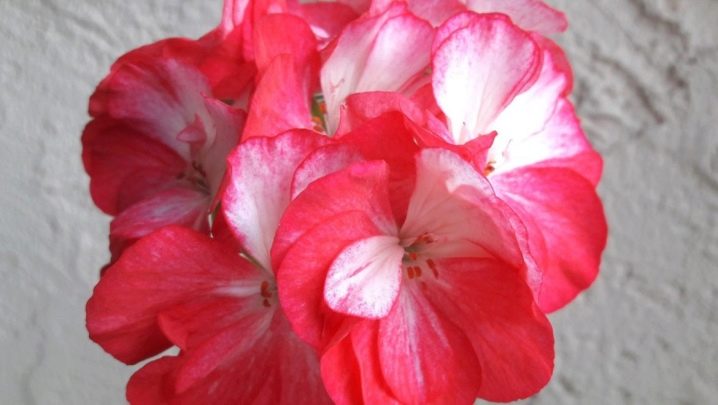
- "Passat". This variety can be distinguished not only by its light pink hue, but also by its corrugated petals. The inflorescence is very similar to a pompom: so densely the flowers are located to each other. This species is loved by both beginners and experienced growers. If properly cared for, geraniums will bloom frequently and in large quantities.
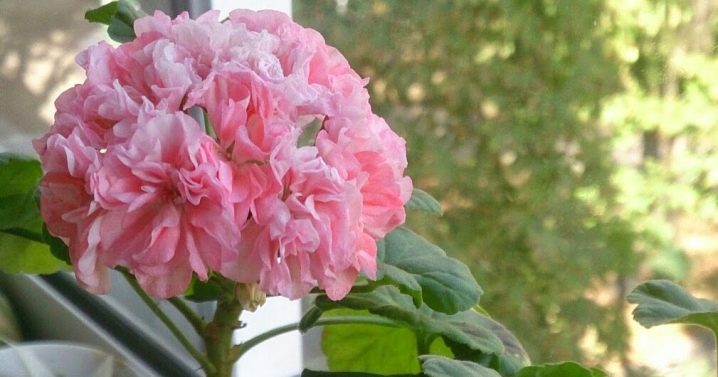
- Peppermint Twist. This variety has a distinctive feature: its petals are densely covered with burgundy blotches. Leaves are bicolor with a brown center and green edges. Peach-colored buds remain attractive for a long time.
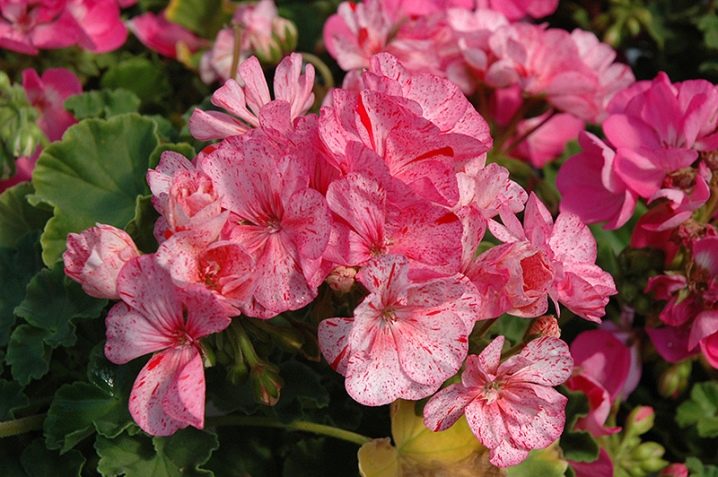
- Lake. A distinctive feature of the plant is bright orange petals in waves. The most intense color appears only when there is enough sun. If you plant a flower in the shade, then you should not expect a bright color.
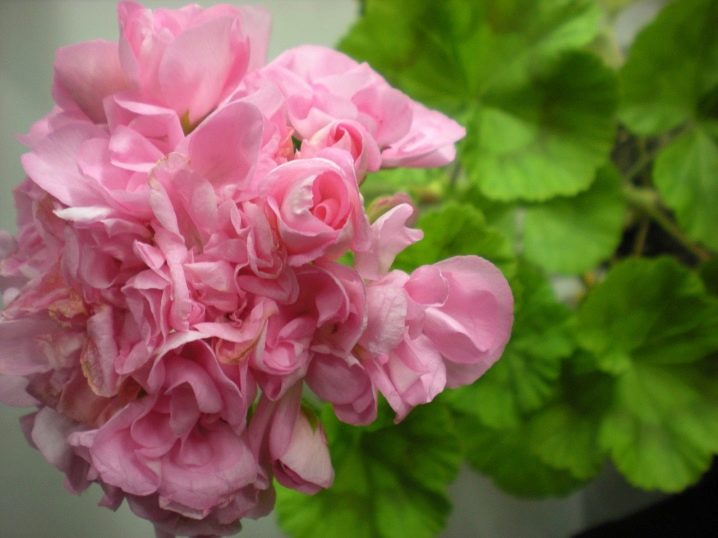
- "Bronze butterfly". It is easy to recognize the variety by the existing spot on the surface of the leaves, which resembles a butterfly in shape. The flowers are similar in shade to that of a peach, but differ in a slight bronze tint. The petals are needle-like, so the inflorescence is very similar to the aster. Peduncles are not long, bushes require pruning.
This variety is not afraid of heat and rain, the flowers retain their decorative shape for a long time.
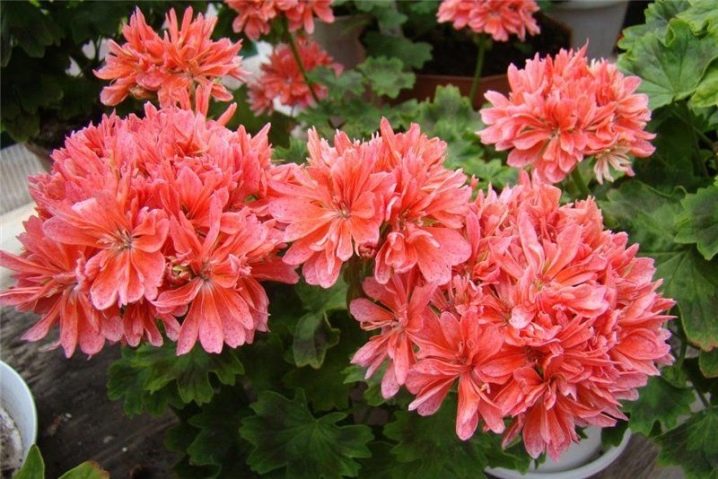
- "Magnus". A double flower of a red hue, velvety and graceful. At the peak of flowering, many buds are formed, but despite this, the bush looks compact, and an attractive head is formed above the foliage. Green foliage, if you look closely at it, has a slight brown tint.
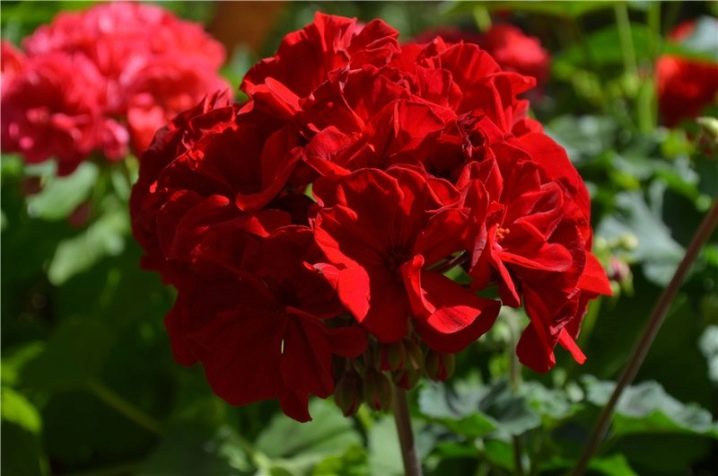
Beautiful examples
Among the many types of pelargonium, especially attractive varieties can be distinguished.
- Alison March. A beautiful dwarf zoned variety with pale pink flowers and silvery variegated leaves. Growers love the contrast between flowers and foliage.
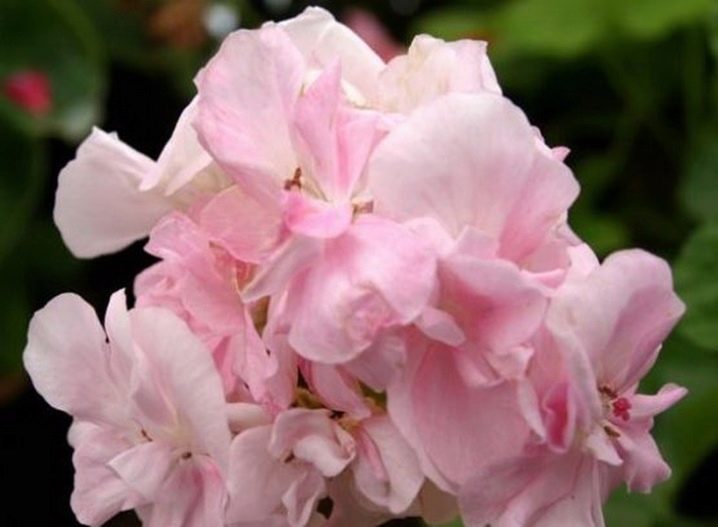
- Alison Shadow. A neat little dwarf zoned variety. The flowers are pink with dots and stripes of bright red against a background of silvery variegated foliage.
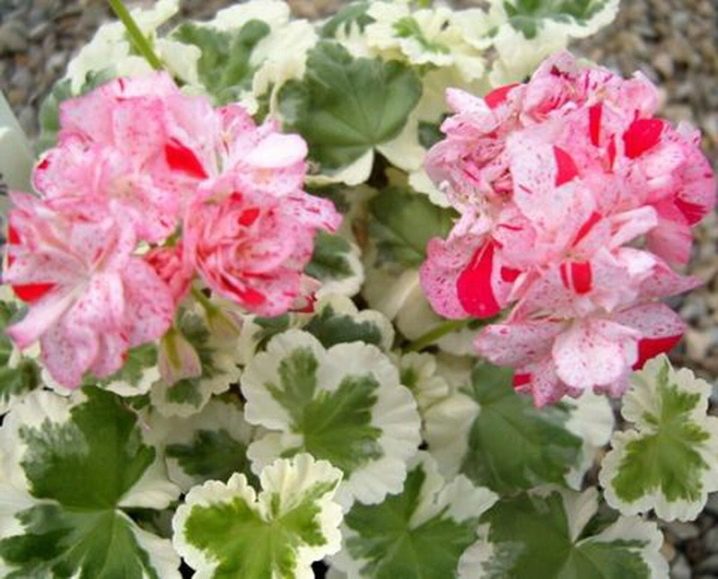
- Bambridge. Delightful dwarf zoned variety with yellow foliage. There is a bronze zone on each sheet. Delicate pink double flowers with a white eye. Often used at exhibition stands.
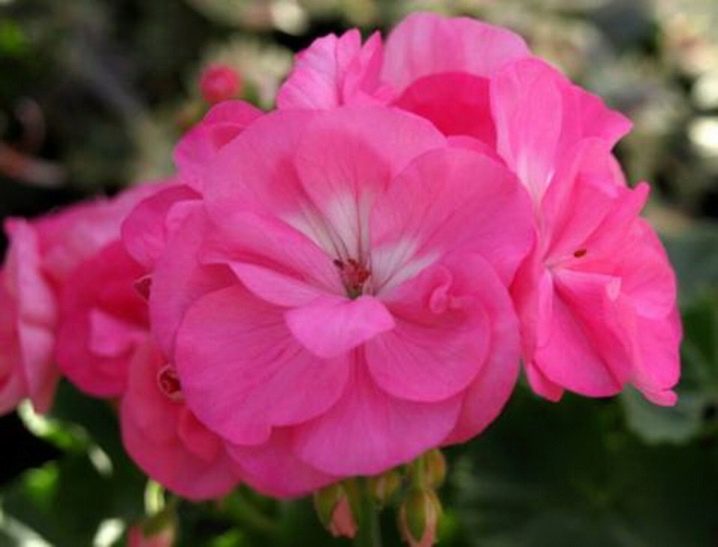
- "Brave Cherub". Of all the varieties available, it has the brightest pink flowers with a white eye. It is a dwarf species.
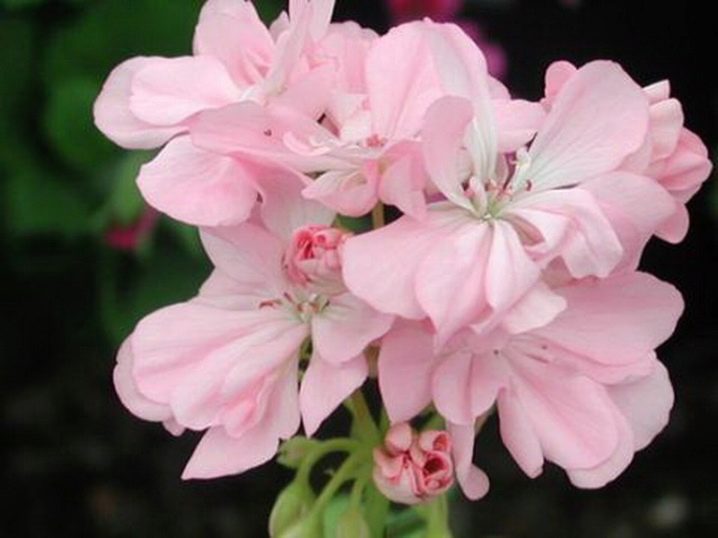
- Bold Gem. The buds of this flower have an unusual shade of coral red. It multiplies quickly and easily, does not require careful maintenance.
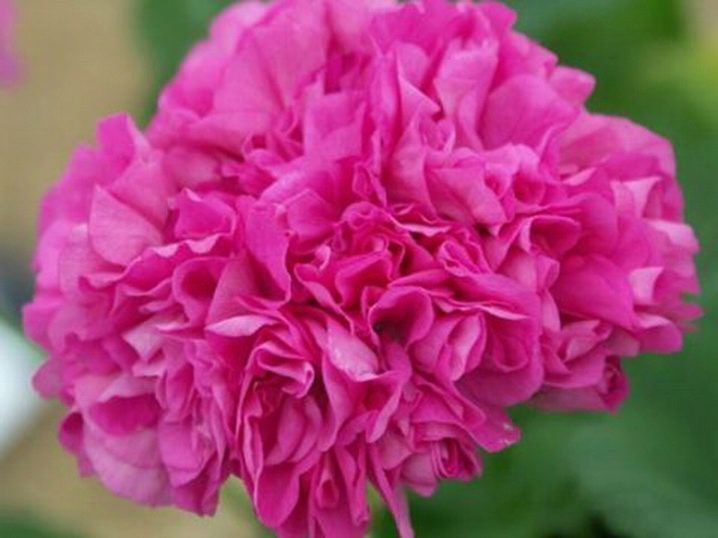
- "Bold Pixie"... This is one of the dwarf species. Like other varieties, it has a large number of lilac-pink flowers.
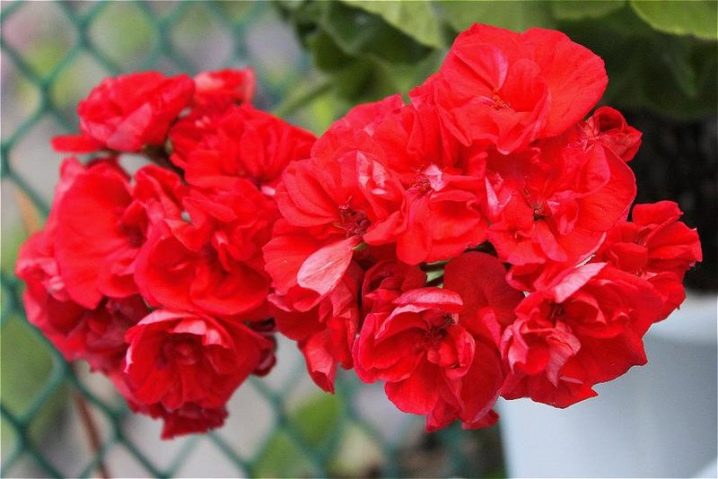
- Alveston... The plant is very small in size with one pale pink flower against a background of golden foliage. The flowers look lacy.
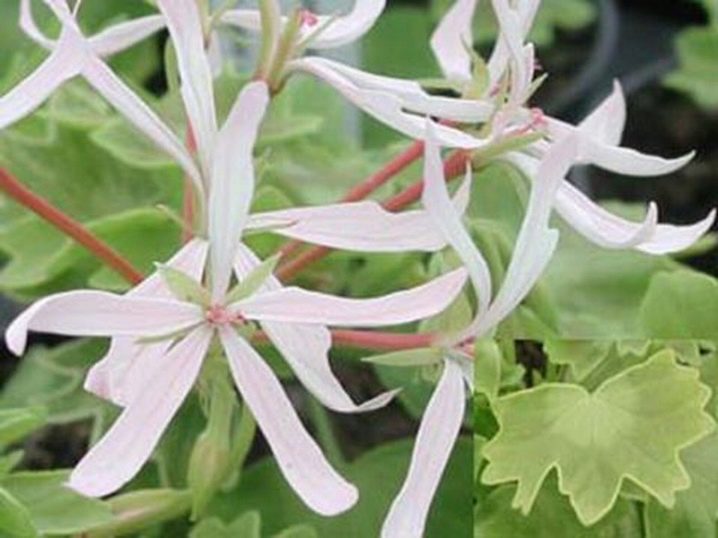
- Helen Christine... Dwarf pelargonium with a characteristic combination of black-green foliage and purple-pink or red flowers.
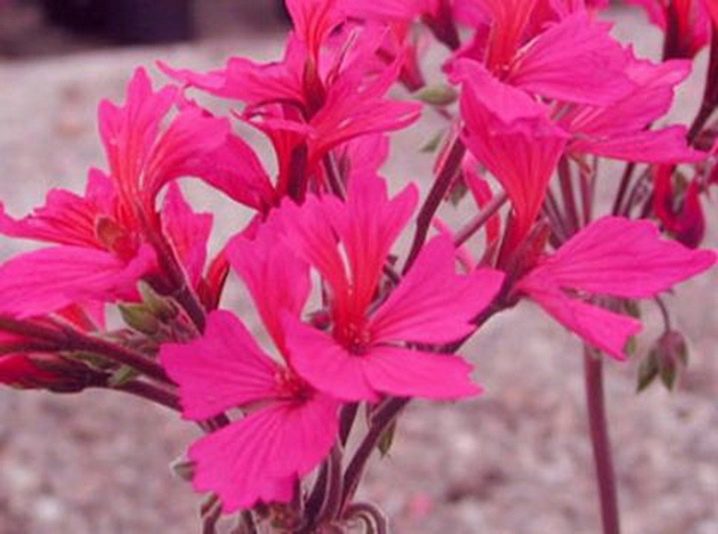
For information on how to properly care for royal pelargonium, see the next video.































Super! Thank you very much for the detailed description, very useful for beginners.
A very informative article! Thanks a lot!
Thanks. Very detailed. I learned a lot of new and interesting things.
The comment was sent successfully.